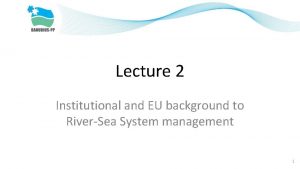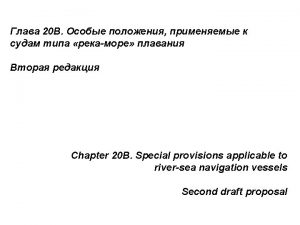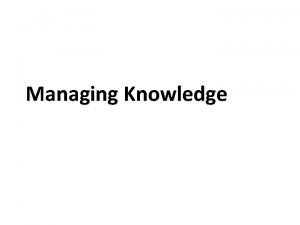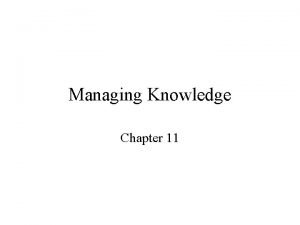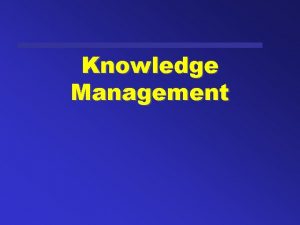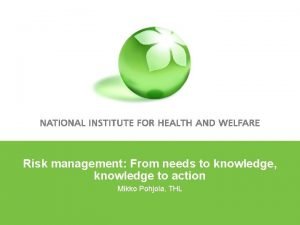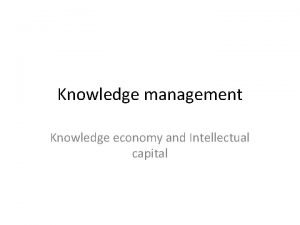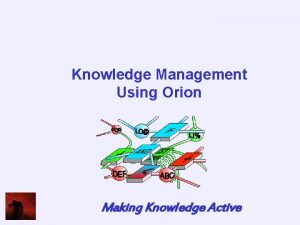Lecture 6 Knowledge needs for RiverSea System management















- Slides: 15

Lecture 6 Knowledge needs for River-Sea System management – Sediments & Management 1

Sediments & Management • Movement from catchment-to-coast and how that is altered • Significantly affected by catchment, river and coastal management Requires understanding of sediment dynamics in a source to sink system to manage sustainably across River-Sea continua 2

Sediments & Management background Salient facts: Ø Sediment is a resource utilised for fertile farmland as a source of construction material Ø Hydromorphological characteristics of the river influence sediment regimes and are crucial for the diversity of habitats and biota Effects: Ø Erosion and sedimentation processes interact with human interventions in the sediment regime, like deepening of navigation channels, dredging for maintenance, damming for energy generation or drinking water reservoirs Challenges include: Ø Understanding how large scale sediment regimes of a River-Sea System affects general ecological conditions and lead to risks across multiple objectives 3

Sediments & Management – knowledge gaps 4

5



Research Priorities for Sediments & Management 8

Healthy ecosystems • Threatened by changes in habitats, water quality, river regimes • Need to maintain biodiversity that maintains ecosystem structure Requires understanding of biodiversity and connectivity across RSSs and how it affects future provision of ecosystem services 9

Healthy ecosystems- background Salient facts: Ø Pressures of river regulation, channelization, deepening and widening, as well as diking and bank stabilization, lead to habitat changes and losses Ø Nutrient loading and chemical pollution due to agriculture, urbanisation and industry further challenge ecosystem structure and functioning Effects: Ø Decline of biodiversity, which is most pronounced in freshwaters Ø Land use changes affect ecosystem services, through fundamental shifts in the structure and functioning of freshwater, transitional water and coastal ecosystems Challenges include: Ø Understanding how changes in ecosystem structure and functioning relate to ecosystem services and ecosystem health 10

Healthy ecosystems – knowledge gaps 11

12

13

Research Priorities for Healthy ecosystems: Biodiversity 14

Research Priorities for Healthy ecosystems: Ecosystem services 15
 01:640:244 lecture notes - lecture 15: plat, idah, farad
01:640:244 lecture notes - lecture 15: plat, idah, farad Primary needs and secondary needs
Primary needs and secondary needs Satisfaction
Satisfaction Henry murray theory
Henry murray theory Strategic gender needs and practical gender needs
Strategic gender needs and practical gender needs Wants in esp
Wants in esp Unified health management information system
Unified health management information system Personal and shared knowledge
Personal and shared knowledge Knowledge shared is knowledge squared meaning
Knowledge shared is knowledge squared meaning Knowledge shared is knowledge multiplied interpretation
Knowledge shared is knowledge multiplied interpretation Knowledge creation and knowledge architecture
Knowledge creation and knowledge architecture Contoh shallow knowledge dan deep knowledge
Contoh shallow knowledge dan deep knowledge Posteriori knowledge meaning
Posteriori knowledge meaning Book smarts definition
Book smarts definition Shared knowledge vs personal knowledge
Shared knowledge vs personal knowledge Gertler econ
Gertler econ

















